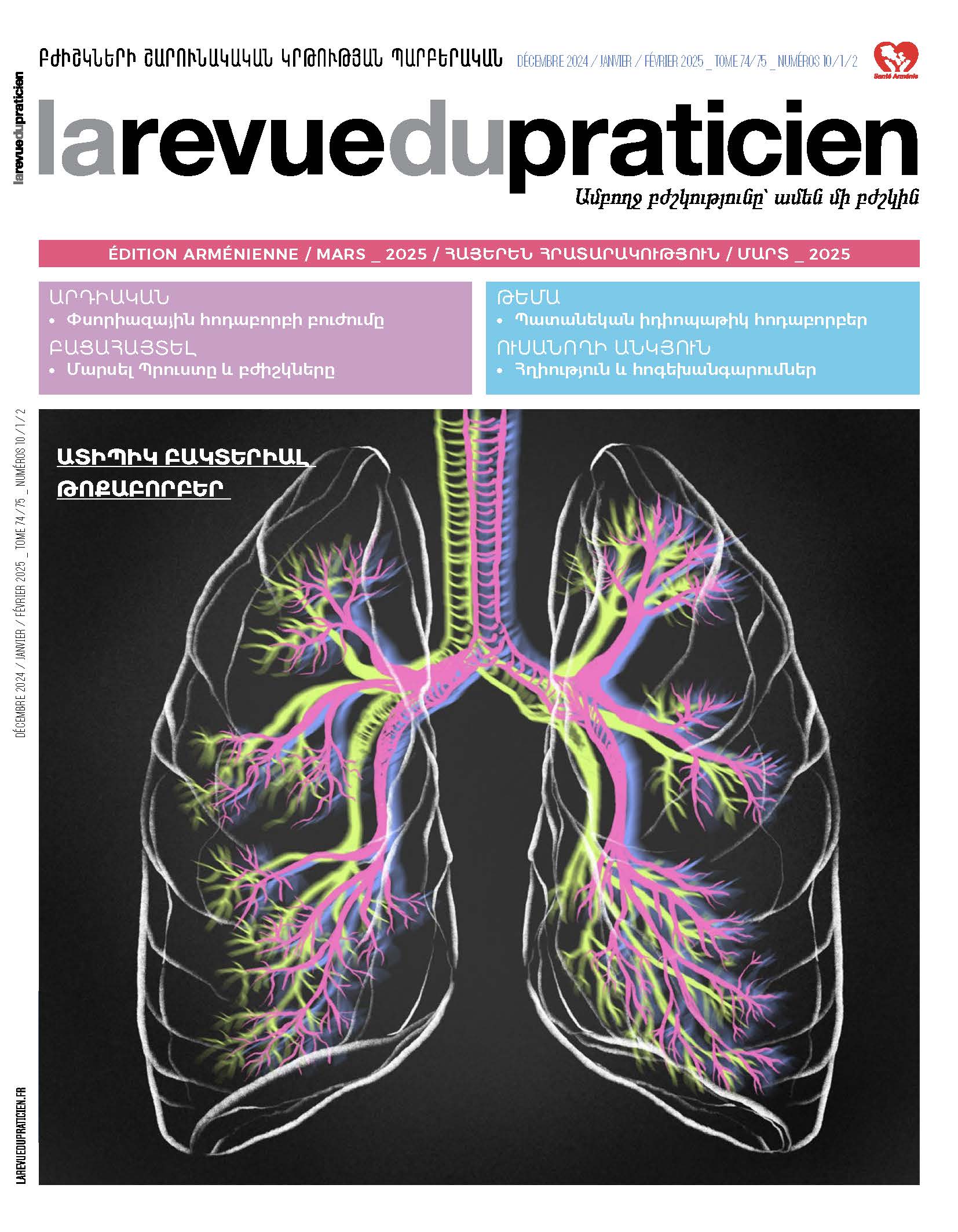Ամփոփագիր
Պատանեկան իդիոպաթիկ հոդաբորբի (ՊԻՀ) ոչ համակարգային ձևերի համար ընդհանուր բնութագրեր են՝ մինչև 16 տարեկան տարիքում սկսվելը, հոդաբորբի առկայությունը և տարբերակիչ ախտորոշումները բացառելուց հետո ավելի քան 6-շաբաթյա ընթացքը: Ռևմատոլոգիական միությունների միջազգային լիգայի (International League of Associations for Rheumatology) ներկայիս դասակարգումը հիմնված է կլինիկական ու կենսաբանական չափանիշների վրա և տարբերում է ոչ համակարգային ՊԻՀ-ի հետևյալ ձևերը՝ սակավահոդային (օլիգոարտիկուլյար), բազմահոդային (պոլիարտիկուլյար)՝ ռևմատոիդ գործոնով ու առանց դրա, էնթեզիտով հոդաբորբ, փսորիազային հոդաբորբ և չդասակարգված ձևեր: Որոշ ձևեր ունեն մանկական տարիքին հատուկ կլինիկական դրսևորումներ և առանձնահատկություններ: Բուժումը բազմաբնագավառային է, համակարգում է մանկական ռևմատոլոգիայի ոլորտում մասնագիտացած կամ ռեֆերենս կենտրոնի ստացիոնարում աշխատող բժիշկը՝ ընտանեկան բժշկի հետ համատեղ և այլ մասնագետների աջակցությամբ՝ կլինիկական պատկերից կախված: Ներկայումս կանխատեսումը, ընդհանուր առմամբ, բարենպաստ է բուժական նոր ալգորիթմների մշակման և ծանր ձևերի համար կենսաբուժական միջոցների հասանելիության շնորհիվ: Այս հոդվածը ներկայացնում է ՊԻՀ-ի տարբեր տեսակների և երեխաների շրջանում այս հիվանդությունների կասկածի դեպքում կլինիկական, կենսաբանական և առաջին շարքի վարման ընդհանուր պատկերը:
Հիմնաբառեր.
պատանեկան իդիոպաթիկ հոդաբորբ:
